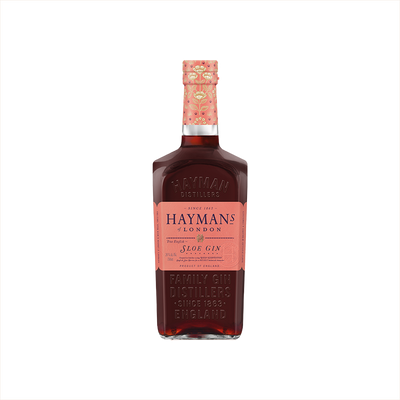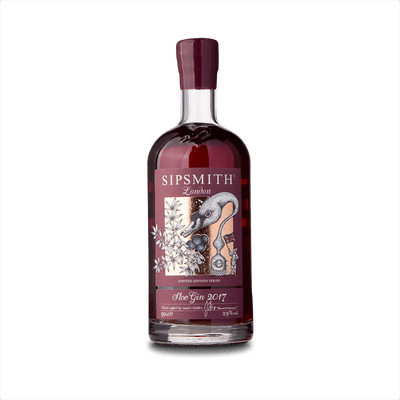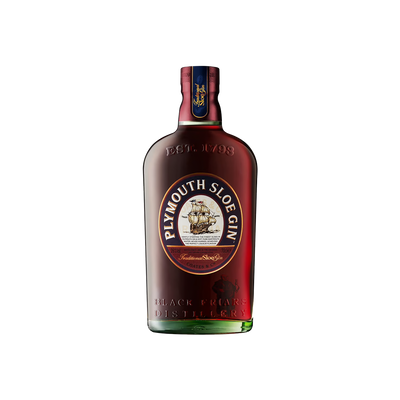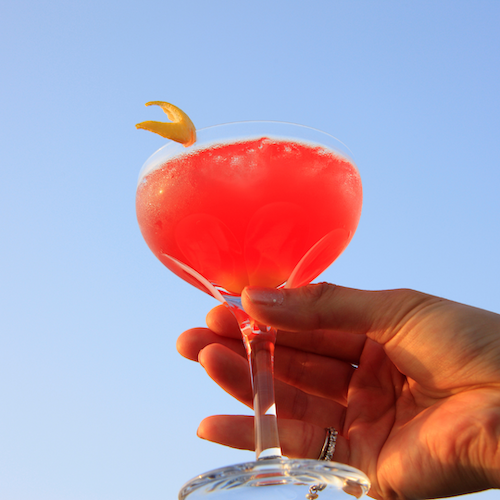Sloe Gin
What is Sloe Gin?
Sloe gin is a distinctive type of gin that's actually a liqueur made by steeping sloe berries—small, tart fruits from the blackthorn bush—in gin along with sugar. The result is a deep red, sweet-tart spirit that tastes more like a fruity cordial than traditional juniper-forward gin. What defines sloe gin is this specific infusion process and the unique flavor profile of sloe berries, which transform ordinary gin into something completely different with notes of almond, plum, and a characteristic astringent finish.
Learn More About Sloe Gin
What makes Sloe Gin unique?
Sloe gin stands apart from regular gin because it's technically a liqueur, not a true gin at all. While traditional gin gets its character from botanicals during distillation, sloe gin is made by steeping tart sloe berries (wild plums) in gin for months, creating a naturally sweet, ruby-red spirit with a distinctive fruity tartness. This infusion process gives sloe gin its lower alcohol content and candy-like appearance, making it more approachable than London Dry or other gin styles that rely purely on juniper and botanical complexity.
How is Sloe Gin made?
Sloe gin starts with picking sloe berries—the dark blue, tart fruit from blackthorn bushes—typically after the first frost when they're at their softest and most flavorful. The berries get pricked or lightly crushed, then steeped in gin along with sugar for several months, allowing the fruit's deep purple color and rich, almond-like flavor to infuse into the spirit. After straining out the fruit, you're left with a sweet, ruby-red liqueur that balances the gin's botanicals with the sloe's distinctive tartness and natural fruit sugars.
How do you drink Sloe Gin?
Sloe gin shines brightest when mixed into cocktails rather than sipped neat, thanks to its sweet, jammy character that can feel cloying on its own. Classic cocktails like the Sloe Gin Fizz, Blackthorn, and Charlie Chaplin showcase its berry-forward profile beautifully, while it also works magic in modern craft cocktails that play up its fruit-forward nature. The liqueur's warming spice notes and rich crimson color make it perfect for autumn and winter sipping, whether you're hosting holiday parties or settling in by the fireplace with a well-crafted cocktail that celebrates the season's cozy spirit.
How do I choose a good Sloe Gin?
Look for sloe gins that list real sloe berries as the primary ingredient and avoid anything with artificial flavors or excessive added sugar – the best ones strike a balance between the berry's natural tartness and sweetness. For sipping neat or in simple serves like a sloe gin fizz, opt for premium brands like Plymouth or Sipsmith that showcase complex fruit character, while budget-friendly options work perfectly fine in punches or mixed drinks where other ingredients will complement the base spirit. Consider the sweetness level too: drier styles work better in gin-forward cocktails, while sweeter versions shine in dessert cocktails or when you want that classic British hedgerow flavor to take center stage.
Nutritional Information
Typical Calorie Range per Ounce: 65-85 calories
Typical Carbohydrate Range per Ounce: 6-12 grams
Typical Sugar Range per Ounce: 5-11 grams
Typically Gluten Free: Yes
Sloe gin tends to be higher in calories and sugar compared to regular gin due to the addition of sloe berries and sweeteners used during the maceration process. The sugar content varies significantly between brands, with some artisanal producers using less sweetener than mass-market versions.
While sloe gin is typically gluten-free since it's made from gin (which is distilled from grain), those with celiac disease or severe gluten sensitivities should always check detailed product information to confirm gluten-free status, as production methods and additives can vary between manufacturers.
Scrolled this far? Your reward? Sloe Gin Trivia!
- Sloe gin isn't actually gin at all – it's technically a liqueur. Real gin must be distilled with juniper as the predominant flavor, but sloe gin is made by macerating sloe berries (tiny wild plums) in actual gin. The result is something closer to a fruit brandy in sweetness and character, which is why bartenders often treat it more like Cointreau than Tanqueray.
- Victorian ladies used sloe gin as a socially acceptable way to drink alcohol during the temperance movement. Since it was considered a "medicinal tonic" for digestive issues and often homemade, proper ladies could sip it without raising eyebrows. Many kept secret family recipes passed down through generations, turning what was essentially fruit-infused spirits into respectable medicine.
- The best sloe berries are harvested after the first frost because freezing breaks down the cell walls and makes the fruit release more flavor and color. Traditionalists still follow the old rule of picking only after October 31st. Some modern producers actually freeze fresh berries to simulate this effect, but purists insist nothing beats nature's timing.
- Sloe gin was once so popular it nearly caused a shortage of wild sloe bushes in England during the 1800s. Commercial demand grew so intense that people were stripping hedgerows bare, leading to concerns about ecosystem damage. The government actually had to regulate harvesting in some areas to protect the thorny shrubs that provide habitat for wildlife.
- A proper sloe gin takes at least three months to make, but the absolute best versions age for a full year or more. The berries need time to break down completely and infuse their deep purple color and tart-sweet flavor. Master distillers know that patience creates the difference between a decent sloe gin and one that tastes like liquid velvet with a perfect balance of fruit and botanical complexity.
Higher-proof spirits can be intense. Mix carefully, taste thoughtfully, and enjoy responsibly.
Gift message (optional)





